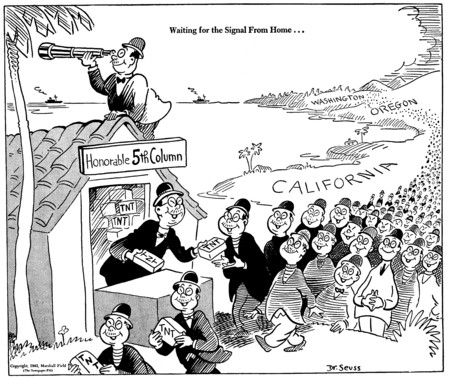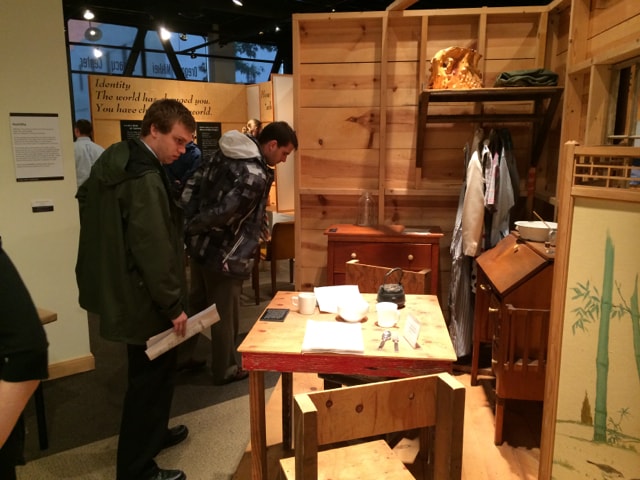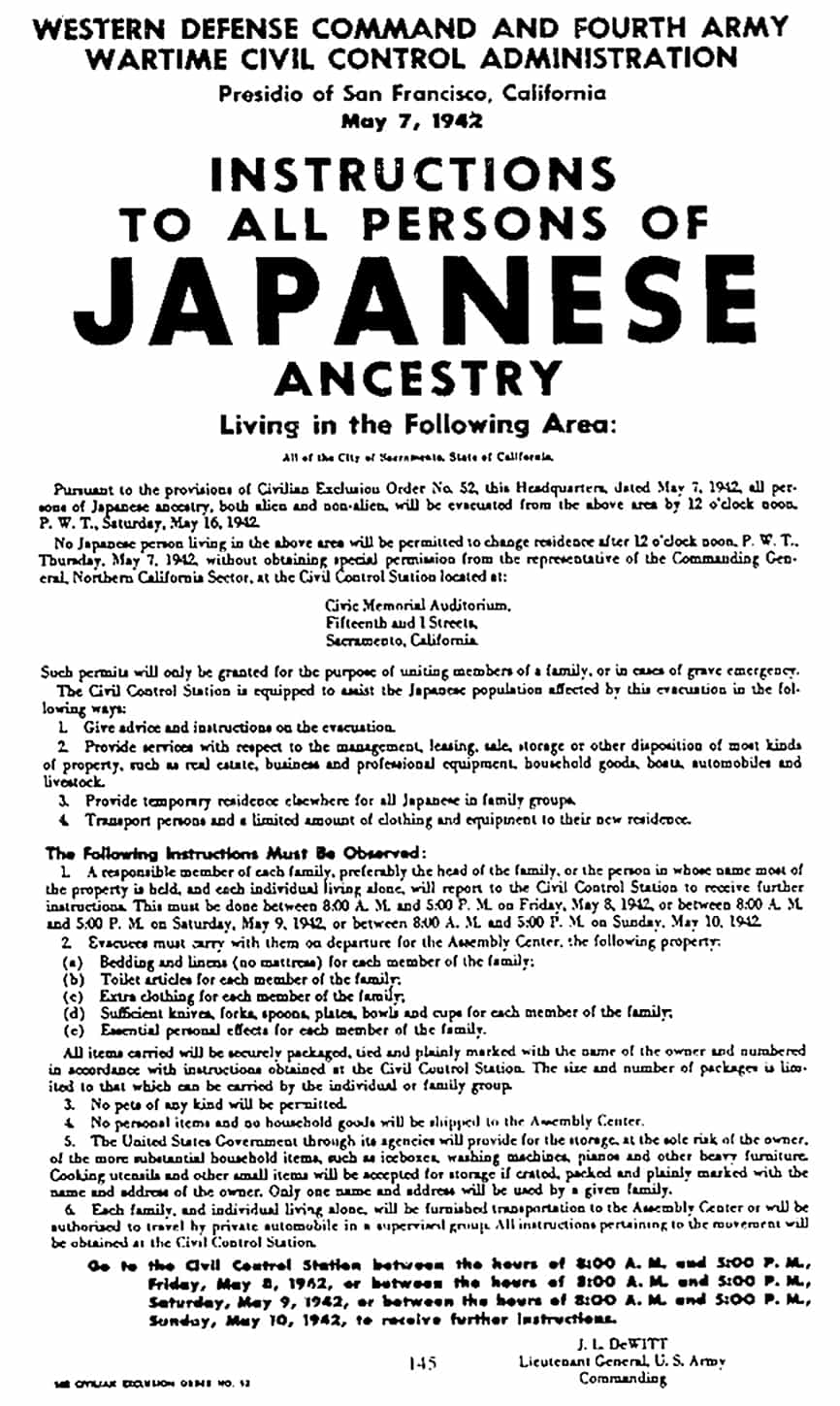A mini-lesson on WWII cartoons by
Kristi Anne McKenzie
Historical Content: World War II (home front)
Historical Skills: Contextualization, sourcing
Intended Grades: 9-12
Directions:
Use the source information, your knowledge of history, and the video and political cartoons to answer the questions below.
Sources:
Document A is an animated short film written by Theodor Geisel (Dr. Seuss) and P.D. Eastman and produced by Warner Bros. for the War Department as part of the U.S. Army Air Force First Motion Picture Unit. Documents B, C and D are political cartoons created by Dr. Seuss for PM, a New York City daily newspaper.
Document A: Private SNAFU in Rumors
Question 1: When was the film produced?
Question 2: Which two of the facts below might help explain why the author wrote this screenplay?
- After the attack on Pearl Harbor, Dr. Seuss, like many Americans, developed a concern for national security and a fear of foreign enemies.
- Private SNAFU cartoons were only shown on military bases; they were not allowed to be shown to the general public. As they were a product for the use of the War Department, the films did not have to comply with standard censorship regulations in regards to decency or colorful language.
- In order to keep the animation studios open during the war, companies like Warner Bros. had to produce military training films.
- The goal of the Private SNAFU films was to teach lessons on secrecy, military protocols, and disease prevention to soldiers with poor reading skills.
Question 3. Now compare the film “Rumors” with the three political cartoons. How is the intended audience similar and different? How is the intended message similar and different?
Document B: War Monuments No. 3, published January 8, 1942
Document C: Waiting for the Signal from Home, published February 13, 1942
Document D: Funny… Some People Never Learn to Keep Their Barn Doors Locked, published February 16, 1942
Lesson Goals: Students should be able to situate the film and the political cartoons on a timeline of World War II events, primarily around the bombing of Pearl Harbor (December 7, 1941) and President Roosevelt’s issuance of Executive Order 9066 (February 19, 1942). Students should recognize the difference between making an animated film for enlisted men in the military and drawing political cartoons for the general public. They should also note that the message of the cartoons and the film are quite similar, but the difference in the intended audience has an effect on the context.
Possible extension activity: Compare and contrast Carlos Mencia’s 2002 stand-up routine for Comedy Central Presents with Dr. Seuss’ cartoon “Waiting for the Signal From Home.” What themes emerge?
Reflection: This was a fun project. It seemed to me that it should have been a more difficult task to assemble a lesson on primary sources using a medium that was new to me (Google Presentation), but the Stanford History Education Group’s assessment model was so clear that this lesson came to together almost effortlessly. In fact, it came together so well I thought I must have done it incorrectly, or left something out. My thanks to Sam for thoroughly examining my first draft and offering his insight and support. This is the kind of lesson that makes me feel like I am doing what I am meant to be doing, and moving in the right direction.
Sources:
Document A, Private SNAFU in “Rumors,” is now in the public domain. http://www.youtube.com/watch?v=ZGP7GebzO_E
Document B: War Monuments No. 3, published by PM Magazine on January 8, 1942, Dr. Seuss Collection, MSS 230. Special Collections & Archives, UC San Diego Library. http://libraries.ucsd.edu/speccoll/dswenttowar/#ark:bb76459366
Document C: Waiting for the signal from home…, published by PM Magazine on February 13, 1942, Dr. Seuss Collection, MSS 230. Special Collections & Archives, UC San Diego Library. http://libraries.ucsd.edu/speccoll/dswenttowar/#ark:bb5222708w
Document D: Funny… Some people never learn to keep their barn doors locked., published by PM Magazine on February 16, 1942, Dr. Seuss Collection, MSS 230. Special Collections & Archives, UC San Diego Library. http://libraries.ucsd.edu/speccoll/dswenttowar/#ark:bb5700525j









